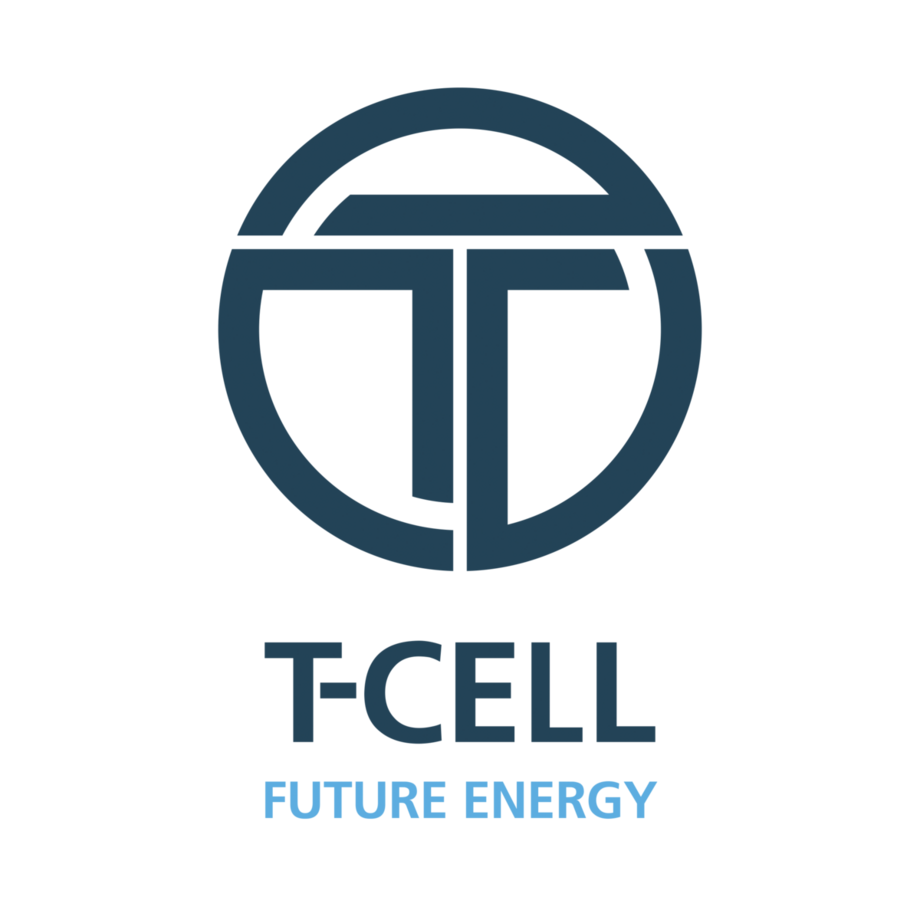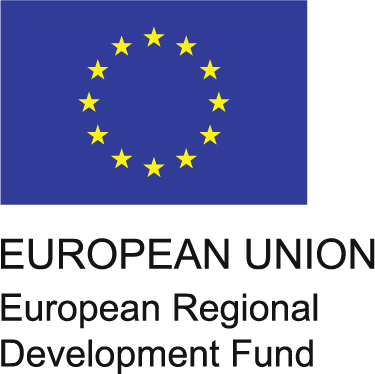Completed projects
Investigation of key properties of thin film oxide semiconductors for gas sensing applications
Brief description:
The fundamental objective of the project is to consolidate bilateral cooperation between the Brandenburg Technical University Cottbus-Senftenberg (Chair of Applied Physics and Semiconductor Spectroscopy) and Wroclaw University of Science and Technology (Chair of Microelectronics and Nanotechnology) and to improve skills and competences of young researchers of both cooperating teams in the field of fabrication and diagnostics of advanced structures based on semiconducting oxides, designed for sensor applications. In particular, the focus lies on the optimization of key parameters in the fabrication of innovative thin film oxide nanomaterials for resistive, electrochemical, and optical (gasochromic) sensors , designed for the detection of various gases (including nitric oxides, ammonia, methane, hydrogen) and vapours of volatile organic compounds (e.g., ethanol). A mass spread of hydrogen utilization in renewable energy technologies requires the ongoing development of sensors and detectors to enable the safe and sustainable hydrogen use, transport, and storage. In this sense, several metal oxides (e.g., CeOx, SnOx, In2O3, VO3, WOx, etc.) exhibit a strong chemical reactivity towards reducible gases (e.g., H2 and hydrocarbons), concomitant with a significant change in materials properties such as electrical conductivity. The reducibility of these oxides can be selectively modified by alloying them with additional elements, which allows the targeting of parameters such as sensitivity, selectivity, and cross-sensitivity for specific gases and making these materials promising candidates for its use as active layers in chemical sensors. Moreover, the combination of rare-earth and transition metal oxides with different principles such as doping and use of multilayers or colored surfaces, has become an exciting route toward achieving relatively low operating temperatures (<100 °C) for metal oxide-based sensors.
Cooperation Partner:
- Chair of Microelectronics and Nanotechnology
Wrocław University of Science and Technology
Prof. DSc. PhD. Eng. Jarosław Domaradzki
Project manager:
Prof. Dr. rer. nat. habil. Jan Ingo Flege
Project assistance:
Dr. Małgorzata Kot
Duration:
01.01.2023 - 31.12.2024
Project number:
57656558
Promotional institution:
German Academic Exchange Service (DAAD)
Programme for Project-Related Personal Echange (PPP) with Poland 2023-2025
Keywords:
metal oxide sensors for hydrogen and hydrocarbon detection
Al2O3-ALD on hybride perovskite layers Sub-project: Preparation of the perovskite layers and spectrosocopic characterization of the ALD and perovskite layers
Brief description
The overall objective of the project is to further develop an atomic layer deposition (ALD) process of high quality ultrathin alumina films for their low temperature (~80°C) deposition on large area organic-inorganic perovskite layers. The synthesis and deposition of the perovskite layers will also be developed within the project. The ALD process on perovskite layers will primarily be applied for passivation layers in perovskite solar cells (PSCs), but it is also highly relevant for other optoelectronic devices and e.g. sensors and batteries. PSCs have experienced an immense increase in efficiency within a very short time, but their low long-term stability is the main obstacle to market introduction. To increase the long-term stability, an ultra-thin ALD passivation layer is used, which is produced at low process temperatures and in a very controlled manner preventing the thermally sensitive perovskite layers from degradation and ensuring the necessary transport of the charge carriers generated by the photoelectric conversion through the passivation layer to the electrode.

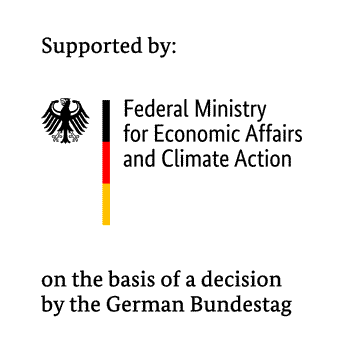
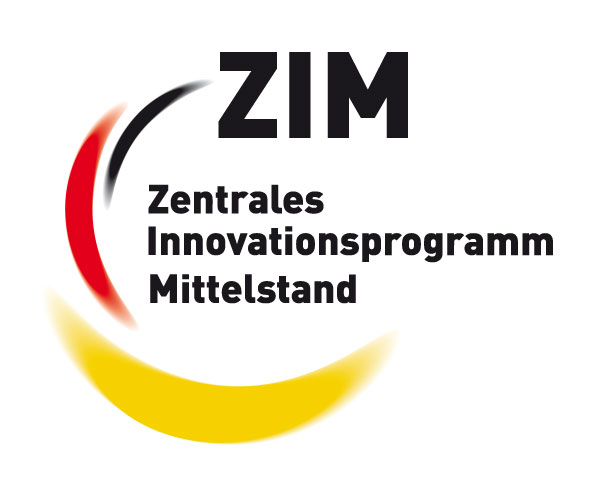
Cooperation partner:
SENTECH Instruments GmbH
Schwarzschildstraße 2
12489 Berlin
Project manager:
Prof. Dr. rer. nat. habil. Jan Ingo Flege
Dr. rer. nat. Małgorzata Kot
Duration:
01.07.2021 – 31.03.2024
Index of advancement:
KK508760BR1
Promotional institution:
Federal Ministry for Economic Affairs and Climate Action (BMWK) in the framework of Central Innovation Programme for SMEs (ZIM)
Keywords:
Atomic layer deposition, perovskite solar cells
TurboFuelCell - Multi-disciplinary component development for hybrid micro gas turbine - SOFC systemSubproject: Periphery develpoment for the integration of pressure-charged high-temperature fuel cells into an overall micro gas turbine SOFC system
Project part: Afterburner/Reformer Unit
Brief description:
The "Turbo Fuel Cell R&D" project comprises the development of a hybrid energy conversion unit consisting of a micro gas turbine (MGT) and a high temperature fuel cell (SOFC). The focus is on component development and system integration for the construction of a prototype. In the overall project, 10 chairs of BTU Cottbus-Senftenberg are working in cooperation with the Fraunhofer Institute IKTS.
In the Afterburner/Reformer subproject, a combined system of reformer and afterburner is being developed for energetically optimizing the heat balance. For the catalytic steam reforming of methane and water to hydrogen and carbon dioxide, a temperature level of approx. 1000°C has to be chosen for the use of nickel-based catalysts, which has to be achieved by afterburning the exhaust gas of SOFC and MGT. The dependence of educt gas composition and flow rate, temperature and pressure derived from the experiment are used as a basis for model development. In the next step, the model being developed will serve as the basis for the simulation of complex geometries of the afterburner/refomer unit.
Cooperation Partner:
- Lehrstuhl Thermodynamik/Thermische Verfahrenstechnik
Brandenburg University of Technology Cottbus - Senftenberg
Prof. Dr.-Ing. Fabian Mauß
Siemens-Halske-Ring 8
03046 Cottbus
Lehrstuhl Verbrennungskraftmaschinen und Flugantriebe
Brandenburg University of Technology Cottbus - Senftenberg
Prof. Dr.-Ing. Heinz Peter Berg
Siemens-Halske-Ring 14
03046 CottbusFraunhofer Institute for Ceramic Technologies and Systems IKTS
Dr. Stefan Megel
01277 Dresden
Duration:
01.01.2020 – 31.03.2023
Index of advancement:
03EWS002A

Promotional institution:
Federal Ministry for Economic Affairs and Climate Action (BMWK)
in the framework of the 7th Energy Research Program of the Federal Goverment
Further information:
In-situ process monitoring for the optimized thin film deposition of functional oxides
Brief description:
The project focuses on the consolidation of the materials research infrastructure for innovative applications in sensorics, microelectronics, photovoltaics, »Power to X to Power« technology, integrated energy, and sustainable mobility.
To fulfill this, existing material deposition systems will be adapted by modular extensions. In particular, atomic layer deposition (ALD) as well as physical vapor deposition (PVD) units will be upgraded by operando (i.e., real-time) respectively in-situ material characterization methods. Thus, the functionality of the combined material deposition and characterization systems will be improved by the possibility to carry out ellipsometry, quadrupole mass spectrometry, and low-energy electron diffraction (LEED) measurements during the material deposition process. This allows performing sophisticated operando and in-situ studies in the basic and applied research fields of ALD and PVD.
Project manager:
Prof. Dr. rer. nat. habil. Jan Ingo Flege
Duration:
17.08.2021 - 31.08.2023 (Grant period)
01.09.2021 - 31.12.2022 (Execution period)
Index of advancement:
85053620
Promotional institution:
Europaen Regional Development Fund (EFRE) in the management of the Ministery for Science, Research and Culture (MWFK)
Promotional programme:
"Promotion of infrastructure, research, development, and innovation in the framework of EFRE (InfraFEI)"
General Informationen about Europaen Regional Development Fund.
Keywords:
Ellipsometry, quadrupole mass spectrometry (QMS), low-energy electron diffraction (LEED), atomic layer deposition (ALD), physical vapor deposition (PVD)
Reasearch Lab Micorelectronics Cottbus-Senftenberg for Silicon-based Optoelectronics
Brief description
Motivation
Universities are a key innovation factor in the research-intensive microelectronics sector. Research at the highest international level is to be made possible to a greater extent by investing in state-of-the-art equipment and facilities at universities. Twelve "Research Laboratories Microelectronics Germany" are to open up new research fields for the microelectronics of the future and train young scientists with state-of-the-art equipment. The "Research Laboratories Microelectronics Germany" network with each other and with external partners for better scientific exchange and stronger cooperation.
Aims and Approach
The new facilities at ForLab FAMOS will be used to integrate new materials (the semiconductors GeSn and SiGeSn, oxides, two-dimensional materials and polymers) into a mature silicon platform. This integration of new materials is expected to result in innovative optoelectronic devices, in particular sensors and integrated light sources, for optical data transmission or biosensors. The ForLab FAMOS will thus bring the BTU Cottbus-Senftenberg also internationally on top level in the research field of optoelectronic devices.
Innovations and Prospects
Electro-optical technologies can be used for faster and more energy-efficient data transmission, and optical biosensors can be configured specifically to desired applications. Potential applications range from rapid or on-site testing in emergency medicine (to detect sepsis) to self-monitoring (measuring hormone levels in saliva) and up to industrial process monitoring (such as food quality).
Cooperation Partner:
- Fachgebiet Experimentalphysik und Funktionale Materialien
Brandenburg University of Technology Cottbus - Senftenberg
Prof. Dr. rer. nat. habil. Inga Fischer
Erich-Weinert-Straße 1
03046 Cottbus
- Chair of General Electrical Engineering
Brandenburg University of Technology Cottbus - Senftenberg
Prof. Dr. rer. nat. Michael Beck
Universitätsplatz 1
01968 Senftenberg
Project manager:
Prof. Dr. Inga Fischer
Duration:
01.01.2019 – 31.12.2022
Index of advancement:
16ES0935
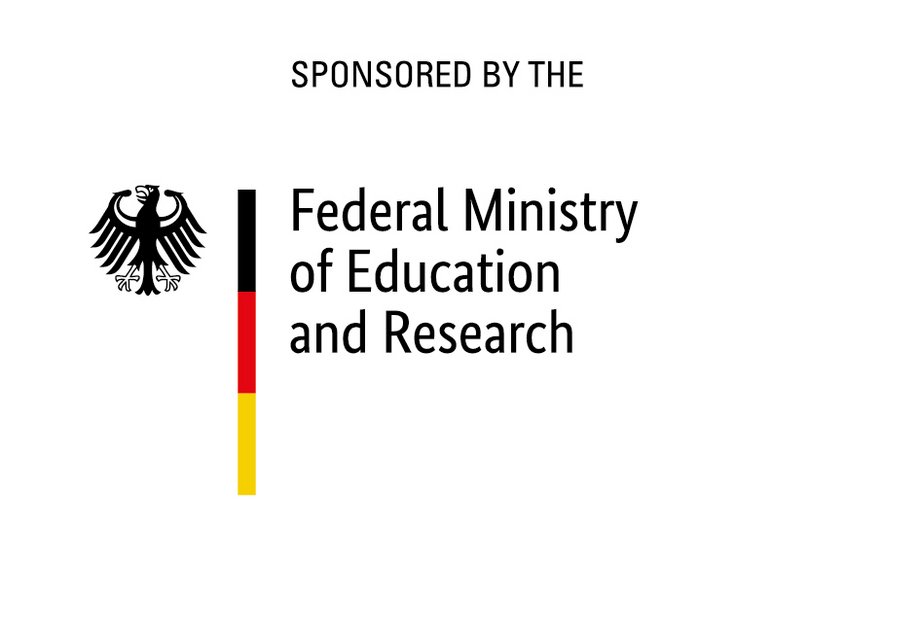

Promotional institution:
Federal Ministry of Education and Research (BMBF)
in the framework of the programme
"Forschungslabore Mikroelektronik Deutschland (ForLab)"
Keywords:
GeSn, SiGeSn, Oxides, 2D-Materials, Optical and biosensors
Further information:
Innovation campus electronics and microsensing CottbusSubproject: Development of silcon-based optimized gas sensors for the specific control of industrial processes and for mass-production
Brief description
The objective of this sub-work package is to demonstrate the functionality of sensors for the detection of hydrogen in laboratory experiments, and to determine the sensitivity and detection bandwidth at room temperature.
A resistivity-based gas sensor for the detection of small variations in gas composition in reductive environments (H2, CxHy) with high sensitivity and low cross-sensitivity will be developed.
The already established concept of the change in conductivity of a metal oxide film under changing gas atmospheres is to be modified and optimized by a total of three approaches that are novel in their combination:
- Increasing the senosr sensitivity by scalable and reproducible nanostructuring of the silicon oxide substrate in a CMOS-compatible way
- Increasing the sensitivity through reproducible, tailored oxide film thickness reduction and conformal thin film deposition on patterned substrates using atomic layer deposition
- Optimization of the sensor selectivity for specific gas species by targeted chemical modifications of the oxide material
Cooperation Partner:
- Chair of Experimental Physics and functional Materials
Brandenburg University of Technology Cottbus - Senftenberg
Prof. Dr. rer. nat. habil. Inga Fischer
Erich-Weinert-Straße 1
03046 Cottbus
- IHP GmbH – Leibniz Institut für innovative Mikroelektronik
Prof. Dr. rer. nat. habil. Christian Wenger
Im Technologiepark 25
15236 Frankfurt (Oder)
Project manager:
Prof. Dr. rer. nat. habil. Jan Ingo Flege
Duration:
15.11.2019 – 31.12.2021
Index of advancement:
16ES1128K

Promotional institution:
Federal Ministry of Education and Research (BMBF)
in the framework of the programme "RPME-Initiativprojekte"
Keywords:
gas sensors, micro-structering, atomic layer deposition, metal oxides, transition metals
Further information:
Flexible photoelectron microscope to consolidate the infrastructure of materials research for the energy turnaround
Brief description:
The project focuses on the consolidation of the materials research infrastructure for innovative applications in microelectronics, sensorics, photovoltaics, sustainable mobility, integrated energy, and »Power to X to Power« technology.
To fulfill this, an existing photoemission electron microscope (PEEM) will be adapted. In particular, a powerful helium source, an enhanced detector with an extremely high signal-to-noise ratio, and main components for a gas dosing system will be purchased and installed at the PEEM system.
Thus, the functionality of the PEEM will be improved by the possibility to perform angle-resolved photoemission spectroscopy (AR-PES) as well as in-situ model studies of gas adsorption.
Project manager:
Prof. Dr. rer. nat. habil. Jan Ingo Flege
Duration:
26.08.2020 - 31.05.2022 (Grant period)
26.08.2020 - 30.09.2021 (Execution period)
Index of advancement:
85044894
Promotional institution:
Europaen Regional Development Fund (EFRE) in the management of the Ministery for Science, Research and Culture (MWFK)
Promotional programme:
"Promotion of infrastructure, research, development, and innovation in the framework of EFRE (InfraFEI)"
General Informationen about Europaen Regional Development Fund.
Keywords:
Photoemission Electron Microscopy (PEEM), Angle-resolved photoemission spectroscopy (AR-PES)
ALD process development of ternary and quaternary thin layers for transparent conducting oxides Sub-project: Spectrsocopic characterization of IGZO layers
Brief description
The project focuses on the research and development of the atomic layer deposition (ALD) process of high-quality thin transparent conducting mixed oxides of the material class In-Ga-Zn-oxide (IGZO).
The quaternary IGZO material system is highly attractive for transparent electrodes in photovoltaics, LEDs, energy-efficient windows and in particular for thin film transistors in flexible or active matrix displays as well as for the low-cost paper electronic. For the fabrication of the oxidic thin films process and cost effective deposition techniques are required.
The usage of the ALD method for the deposition of thin IGZO layers offers one the one hand higher process controllability and on the other hand significant improvement of the layer homogeneity over large areas.
Firstly, the development of the ALD of IGZO layers will be based on investigations using existing systems and plasma sources to evaluate the principle functionality. In a next step, the new process system will be designed, constructed and built-up.
The layer homogeneity and the electronic and electrical properties of the deposited IGZO layers will be investigated.

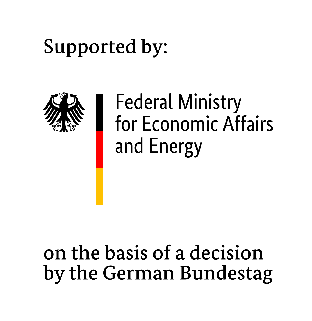

Cooperation partner:
SENTECH Instruments GmbH
Schwarzschildstraße 2
12489 Berlin
Project manager:
Prof. Dr. rer. nat. habil. Jan Ingo Flege (since 01.09.2018)
Dr. Karsten Henkel
Duration:
01.04.2018 – 15.02.2021
Index of advancement:
ZF4510602AG7
Promotional institution:
Federal Ministry for Economic Affairs and Energy in the framework of Central Innovation Programme for SMEs (ZIM)
Keywords:
Atomic layer deposition, transparent conducting oxides, IGZO
Tuning vanadium dioxide films by extreme straining Local investigations on transition phenomena and exotic phases
Brief description
Vanadium dioxide is a correlated oxide with a metal-insulator transition at approximately 340 K. This transition is accompanied by a structural phase transition from the rutile metallic high-temperature structure to the monoclinic insulating low-temperature structure. The transition temperature can be tuned over a broad range by applying mechanical strain; also external electrical fields may drive the transition. Moreover, it is known that under mechanical straining further, exotic phases may occur. Consequently, vanadium dioxide exhibits a large potential for applications, e.g., in oxide electronics provided that these materials properties may be controlled and manipulated as thin films.
In this project we investigate simultaneously and in situ the growth and the structural and electronic properties of vanadium dioxide films on ruthenium dioxide surfaces of different orientations by low-energy electron microscopy (LEEM). We exploit the fact that oxidizing the ruthenium surfaces leads to the coexistence of different crystallographically oriented ruthenium dioxide islands that will act as templates in subsequent vanadia growth. The lattice mismatch between vanadia and ruthenia suggests the occurrence of differently and, in some cases, extremely strained vanadia depending on its orientation. Due to this extreme straining, we expect the occurrence of novel, exotic phases and, more generally, a considerably broadened tuning range for the transition temperature of vanadia. These phases will be thoroughly characterized by LEEM and related local diffraction and spectroscopy techniques, including synchrotron-assisted methods.
In a parallel effort, we aim to employ scanning probe microscopy to obtain unique insights into small-scale phase separation phenomena and also address, mindful of potential applications, the influence of applied electrical fields.
Furthermore, we will extend our studies to ruthenium thin films deposited on sapphire substrates by magnetron sputtering, thereby pushing for higher technological relevance.
Cooperation Partner:
- Dr. Jon-Olaf Krisponeit
University of Bremen
Institute of Solid State Physics
Surface Physics Group
Otto-Hahn-Allee NW1
D-28359 Bremen
Project manager:
Prof. Dr. rer. nat. habil. Jan Ingo Flege
Duration:
2017–2020
Index of advancement:
FL 548/11–1
Project number:
362536548 (GEPRIS)

Promotional institution:
German Research Foundation (DFG)
Keywords:
Vanadium oxide, LEEM, Strain
Oxygen Storage/ Thermo-physical modelling of oxygen storage in three-way catalysts
Brief description
The oxygen storage capacity (OSC) in three-way catalysts (TWC) is directly linked to ceria-based materials. Their ability to store and release oxygen can buffer fluctuations in the exhaust stoichiometry. Thus, the stoichiometry of the exhaust gas can be kept within the small target air-to-fuel-ratio window (λ-window) around λ = 1 even when engine stoichiometry switches from lean to rich or vice versa. This is a desired requirement for a simultaneous conversion of the three pollutants NOx, CO, and unburned hydrocarbons.
Materials providing OSC in TWC are ceria-zirconia solid solutions of type CexZr1-xO2-δ (0<x<1). A detailed understanding of the thermodynamic properties of oxygen incorporation in these materials is important for optimization of the oxygen storage and release performance. The oxygen storage and release ability depends on the Ce/Zr ratio (the x-value), the amount of oxygen in the bulk (the δ-value) as well as the relative content of Ce4+ and Ce3+. The change in Gibbs free energy associated with storage or release of oxygen (∆G(δ)) and the change of Gibbs free energy due to changes of the Ce/Zr ratio (∆GS(x)) are distinguished properties of the oxygen storage material. Once those values are known, the equilibrium constants of all oxygen storage and release reactions can be directly derived. Experimental methods for doing so are based on measuring the equilibrium O2 partial pressure.
The goal of the present project is to get a better understanding of how the equilibrium partial pressure of oxygen over oxygen storage materials can be measured and theoretically described. For that purpose, a series of tests on well-defined model-catalysts and industrial catalysts operated under idealized gas conditions as well as gas mixtures representing engine exhaust composition under realistic operation conditions will be performed. The knowledge gained will be incorporated into a model capable of depicting the dynamic behavior of a TWC. Said model can then be used for a better control of the TWCs performance and on-board diagnosis, benefitting car manufactures as well as engine control unit and catalyst supplies.
Project manager:
Prof. Dr. rer. nat. habil. Jan Ingo Flege (since 01.09.2018)
Duration:
01.07.2018 – 30.09.2020
Index of advancement:
6013150/ Oxygen-Storage M2816
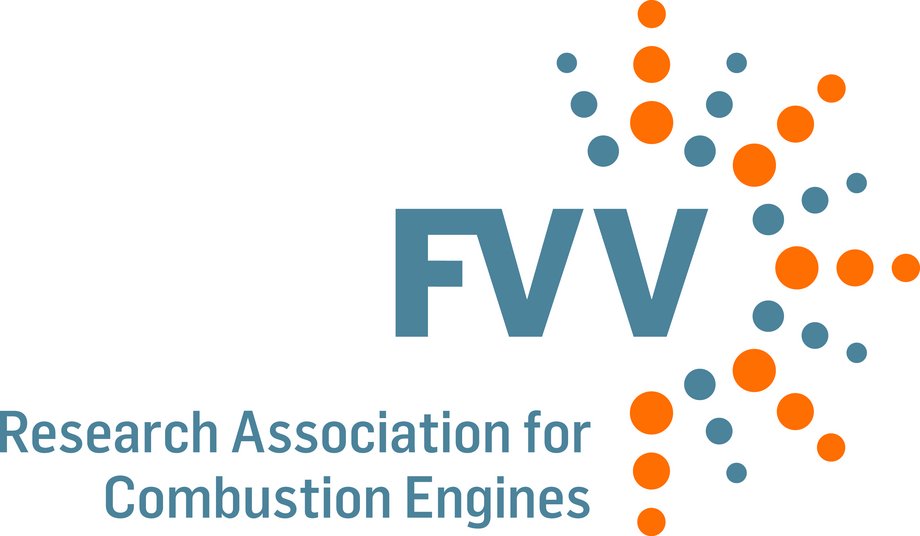
Promotional institution:
Forschungsvereinigung Verbrennungskraftmaschinen e.V. | Research Association for Combustion Engines
Keywords:
Three-way-catalyst, oxygen storage, emissions, cerium oxide, reaction kinetics, reaction equilibrium, simulation
Novel simulation tools for the modeling of catalytic fixed bed reactors Sub-project:Experimental verification of heterogeneous catalysis on the example of direct CO2 conversion to methan and methanol for the development of a simulation software
Brief description
In the context of the energy transition, new and innovative concepts must be found for sustainable energy storage and supply with a simultaneous solution to the CO2 problem. To meet the challenge of the fluctuating availability of renewable energies, the »power-to-gas« approach with a synthesis of methane on the one hand, but on the other hand also the »power-to-liquid« approach with a methanol synthesis are highly topical. Both processes are based on the use of heterogeneous catalysts, the performance of which plays a decisive role in the economic viability of the processes mentioned. If the catalytic reactions are understood, it is possible to optimize conversion, selectivity and yield while maximizing the life time.
The concept of a direct conversion of the CO2 component from the flue gas of e.g. coal-fired power plants, refineries or the cement industry is investigated as a novel method in the project. The direct conversion has the advantage that the separation of the CO2 is not necessary and e.g. methanol can be separated as a liquid phase. Methanation produces a gas mixture that can be converted back into electricity on demand in a combined heat and power plant. This would significantly expand the field of application for CO2 conversion back into valuable substances such as methane or methanol.
Within the project, LOGE Deutschland GmbH is developing a software tool for modeling the physical processes and chemical reactions in the catalyst. The experimental data input and the verification of the modeling is performed by the Chair of Applied Physics and Semiconductor Spectroscopy at BTU Cottbus-Senftenberg. Based on the understanding of the underlying processes achieved in this way, the optimization and upscaling of the above-mentioned processes can succeed.



Cooperation partner:
LOGE Deutschland GmbH
Burger Chaussee 25
03044 Cottbus
Project manager:
Prof. Dr. rer. nat. habil. Jan Ingo Flege (since 01.09.2018)
Dr. Klaus Müller
Duration:
01.04.2018 – 31.03.2020
Index of advancement:
ZF4510601ZG7
Promotional institution:
Federal Ministry for Economic Affairs and Energy in the framework of Central Innovation Programme for SMEs (ZIM)
Keywords:
heterogeneous catalysis, CO2 conversion, direct CO2 conversion from flue gas, methanation

